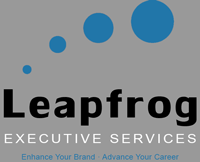A POTEMKIN VILLAGE TALE
Category : 2021
While the origin of the story is suspect, its meaning and application remain.
Search the pages of 18th century Russian history—or folklore, and you find the story of Grigori Aleksasndrovich Potëmkin, an army officer, statesman, and one of the romantic loves of Catherine the Great. Potëmkin’s notable military successes were followed by a gigantic failure to colonize the Ukrainian steppe. A now believed to be fabricated account alleges that when Catherine toured the area, Potëmkin ordered the construction of elaborate village façades to hide the reality of his failure from the Empress.
Tragically, a respected personality from history is remembered more for what he didn’t do than for what he accomplished. For centuries, a Potemkin village has carried the meaning of “an impressive façade or show designed to hide an undesirable fact or condition.” The Theresienstadt camp in Germany was used by the Nazis to hide the horrors of their final solution. Sitting on the north side of the Korean Demilitarized Zone, Kijŏng-dong or Peace Village is more propaganda than substance. Using the concept positively, an hour east of Gothenburg, Sweden, Volvo has constructed AstaZero, a replica of a New York neighborhood where sensor prototypes are given a realistic environment for testing.
In 2017, Photographer Gregor Sailer published the results of a two-year journey capturing images of Potemkin villages scattered across the globe. Sailer shares photos of European-style villages in China, a fake middle-eastern town in the Mojave desert, and a Russian city designed to impress, of course, Vladimir Putin.
From long-forgotten dot-com darlings to WorldCom to Lehman Brothers to a bevy of high-tech companies scattered across the globe today, corporations and the executives that lead them construct elaborate Potemkin villages to lure investors, gain traction in a market, inflate a stock price, or blatantly line the pockets of those behind the schemes. Conversely, Forbes, Newsweek, IndustryWeek, and Reader’s Digest provide annual lists of companies whose brands have remained strong, trusted, and respected for decades.
Any executive facing the challenges, uncertainties, and unknowns of 2021 must choose whether to build his or her personal brand on Potemkinesque imagery or to anchor that brand in authenticity, realism, truthfulness, consistency, and delivered results that focus on more than a financial statement or EPS. Decades of examining corporate results under business school microscopes have confirmed multiple times—the results of a company seldom surpass the character of a company’s leader. Codes of ethics, compliance training, and mission statements appearing as virtual backgrounds during Zoom calls aren’t enough to ensure protection from the Potemkin virus.
Employees in companies of every size are asking for a corporate a purpose bigger than the bottom line and are increasingly intolerant of leadership that is duplicitous, careless with the truth, or unwilling to engage in the conflict that inevitably emerges when a company chooses a path of principle over expedience. An executive in pursuit of enduring results has a pivotal opportunity to choose a path to success built on truth, integrity, and the ability to say, “No,” to anything inconsistent with the leader’s or the company’s values.
Potemkin’s fictitious tale underscores that while a legacy built on a façade may be remembered, it isn’t respected. John Maxwell is right when he says “You build trust with others each time you choose integrity over image, truth over convenience, or honor over personal gain.”
